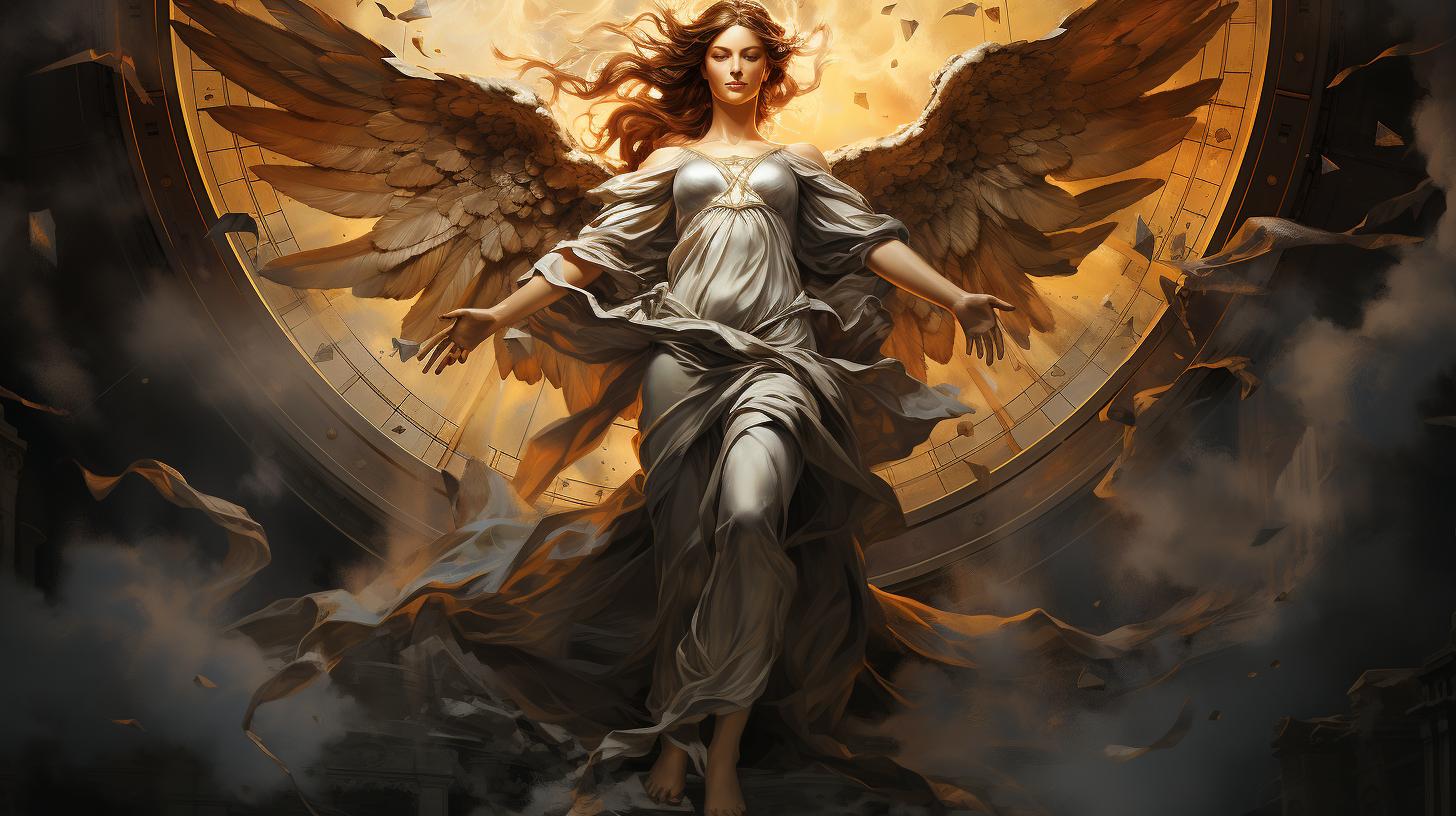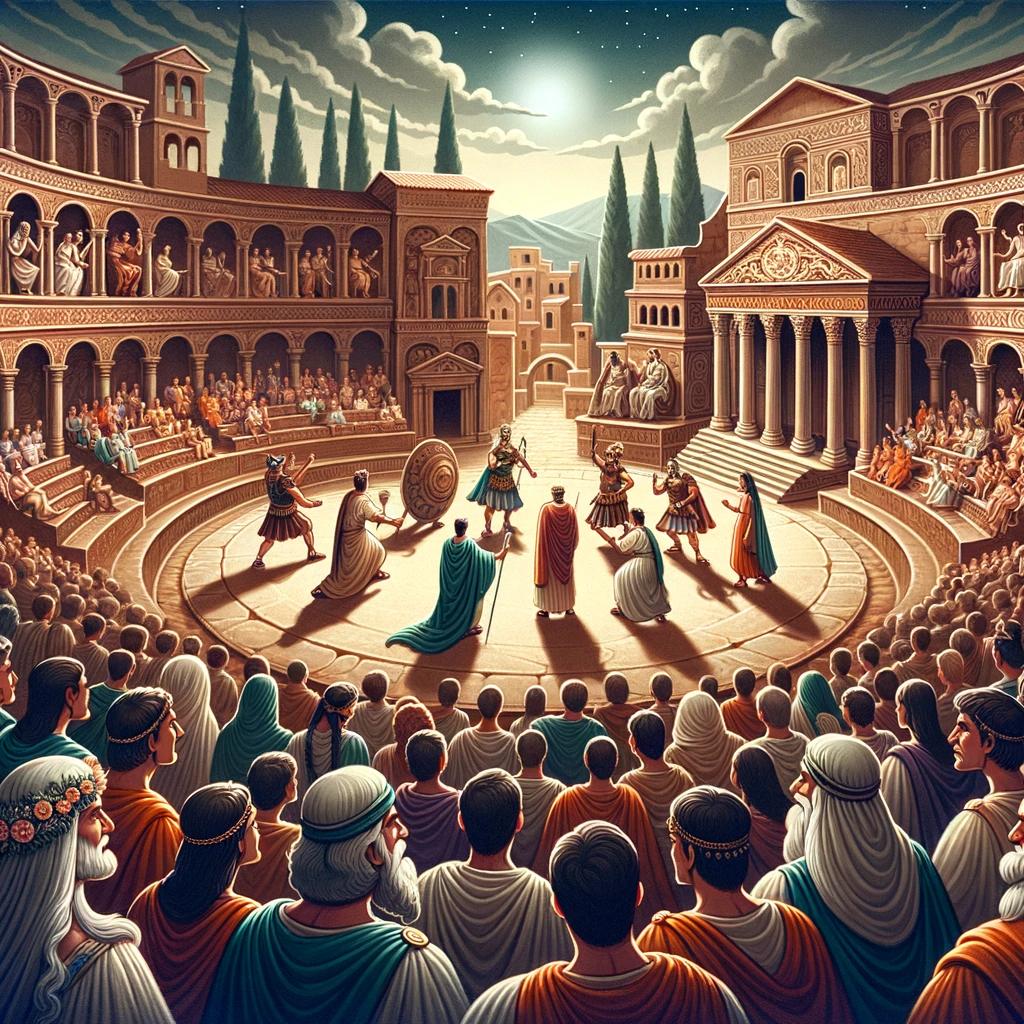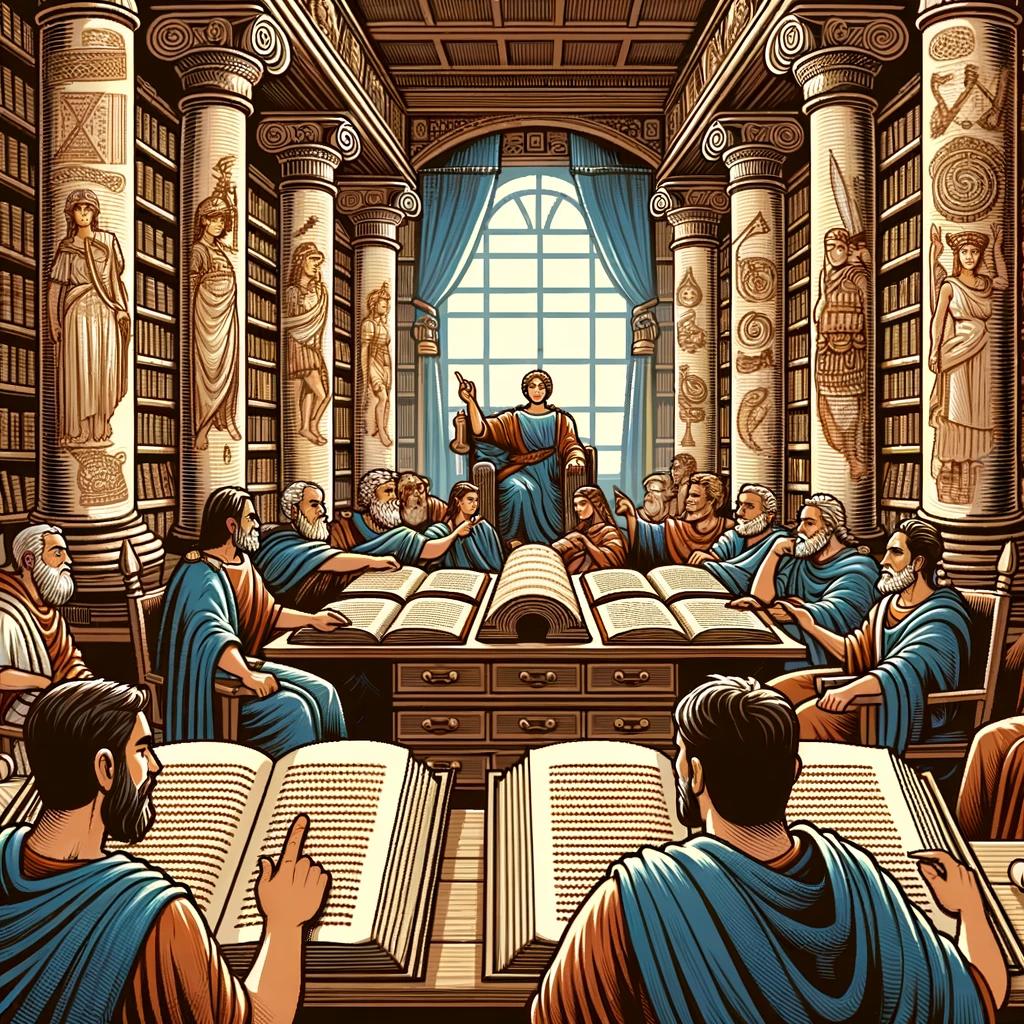Cardea Roman Goddess: Unveiling the Ancient Secrets of the Locks and Hinges

Cardea, the ancient Roman goddess, held a significant role as the guardian of doors and hinges. Associated with Janus, the god of beginnings, she symbolized the transition between the past and the future.
Depicted in various art forms, Cardea’s influence extended to Roman architecture and design. Legends and folklore linked her to magical powers and rituals, while emphasizing the importance of embracing the present moment.
Cardea’s spiritual significance involved warding off evil spirits and invoking protection. Today, her legacy continues to inspire contemporary interpretations and influences representations of goddesses.
Cardea: The Goddess of Doors and Hinges
Cardea, the revered Roman goddess of doors and hinges, played a crucial role in ancient Roman mythology.
As a deity associated with transitions and thresholds, she held deep significance in Roman society. Let’s explore Cardea’s multifaceted nature and her intriguing domain.
Role as a Protector
Cardea was widely recognized as a protective goddess, guarding homes and buildings from malevolent forces. Romans believed that she had the power to avert evil spirits and bring blessings to those under her watchful eye.
Through rituals and invocations, people sought her divine intervention to safeguard their dwellings and ensure their well-being.
Associations with Janus, the God of Beginnings
Cardea’s greatest connection was with Janus, the god of beginnings and transitions. Janus, known for his two faces representing the past and the future, found solace in Cardea’s ability to perceive the present—an aspect he himself lacked.
Their union brought forth a third face for Janus, visible only to Cardea, and together they became the gods of locks and hinges. This connection symbolized the harmony between the past, present, and future.
Symbolism of Locks and Keys
Locks and keys held profound symbolism in ancient Roman culture, representing security, secrets, and access to hidden realms. Cardea’s association with locks and keys emphasized her role as the guardian of physical and metaphorical barriers.
Her domain included not only the literal doors and gates but also the gates of knowledge, opportunity, and transformation. The portrayal of Cardea with keys and locks depicted her as the custodian of passage and protection.
Throughout Roman history, Cardea’s presence left a lasting impact on spiritual beliefs, cultural practices, and artistic representations. Her significance as the goddess of doors and hinges endures, carrying her legacy into the contemporary world.
Cardea in Ancient Roman Art and Literature
Cardea, the Roman goddess of doors and hinges, was an influential figure in both art and literature during the ancient Roman era. Her depiction in sculptures and paintings showcased her significance as a protector and symbol of transition.
Additionally, Cardea’s presence is notable in Ovid’s Metamorphoses, where her character is intertwined with various mythological tales.
Depictions in Sculptures and Paintings
In ancient Roman art, Cardea was often portrayed as a graceful and divine figure, adorned with symbols of her domain. Sculptures showcased her holding keys, representing her role in unlocking doors and protecting homes.
Paintings depicted her with doors and hinges, emphasizing her association with transitions and safeguarding spaces.
References in Ovid’s Metamorphoses
Ovid’s Metamorphoses, a renowned epic poem from ancient Rome, makes references to Cardea in various stories. One notable instance is her appearance in the story of Vertumnus and Pomona, where Cardea assists the nymph Pomona in warding off unwanted suitors.
The poem presents Cardea as a powerful deity intertwined with the narratives of other mythical characters.
Influence on Roman Architecture and Design
Cardea’s significance extended beyond art and literature and reached Roman architecture and design. Being the goddess of doors and hinges, she held a prominent role in the construction of buildings. Architects and designers sought her blessings to ensure the smooth and secure functioning of these essential elements.
Her presence in Roman architecture symbolized protection and the threshold between different spaces.
Legends and Folklore Surrounding Cardea
Legends and folklore surrounding Cardea, the Roman goddess of doors and hinges, add depth to her mythos and showcase her significance in ancient Roman culture. These stories have been passed down through generations, highlighting various aspects of Cardea’s character and the reverence she garnered.
Cardea and the Hawthorn Tree
One popular legend associates Cardea with the hawthorn tree, a symbol of protection and enchantment in folklore. It is said that Cardea had the power to bless hawthorn trees, ensuring their magical properties protected homes and ward off evil spirits.
Cardea’s connection to the hawthorn tree represented her role as a guardian of thresholds and her ability to keep negative energies at bay.
Connections to Witches and Magical Powers
In ancient Roman folklore, Cardea’s name became synonymous with witches and practitioners of magic. It was believed that Cardea bestowed her followers with magical powers, particularly those related to divination and spellcasting.
These associations demonstrate Cardea’s influence over the spiritual practices of the time and her connection to the supernatural realm.
Celebrations and Rituals Honoring Cardea
To honor Cardea’s pivotal role in Roman society, special celebrations and rituals were held in her honor. These gatherings marked significant transitions, such as the start of a new year or the opening of important doors.
During these ceremonies, offerings were made to Cardea, seeking her blessings of protection, prosperity, and smooth transitions. These rituals served as a symbol of gratitude and the community’s reliance on Cardea’s guidance.
Cardea and the Concept of Time
Cardea, the Roman goddess of doors and hinges, holds a deep connection to the concept of time. Her association with Janus, the god of beginnings and transitions, allows her to bridge the gap between the past and the future.
Through their union, Cardea and Janus exemplify the importance of embracing the present moment.
Link to the Past and Future
Cardea’s role as the goddess of doors and hinges signifies the link she holds between the past and the future. As she oversees the opening and closing of physical barriers, she symbolizes the transitions and changes that occur in life.
Cardea reminds us that the choices we make today shape our future while being influenced by our past experiences.
Janus’ Gift of the Present
Janus, known for his duality and ability to see both past and future, found solace in Cardea’s presence. Through their marriage, Cardea granted Janus the gift of the present, something he had rarely focused on due to his obsession with what had been and what is to come.
This newfound perspective reminded Janus to appreciate and cherish the current moment, gaining insight into its significance.
Lessons on Embracing the Present Moment
The myth of Cardea and Janus emphasizes the importance of living in the present. Cardea’s ability to see the present allowed her to fully experience life, appreciating the beauty and opportunities it presents.
By learning from Cardea’s example, we can understand the significance of being present and making the most of each moment, rather than dwelling solely on the past or fixating on the future.
Cardea’s influence over the concept of time reminds us to cherish the present and recognize the role our past experiences and future aspirations play in shaping our lives. By embracing the present moment, we can fully engage with our surroundings, making the most of each encounter and finding fulfillment in the here and now.
Cardea and Spiritual Beliefs
Cardea played a significant role in ancient Roman spiritual beliefs, particularly in the realm of protection and warding off evil spirits. Her association with doors and hinges symbolized her ability to safeguard homes and ensure the well-being of those within.
Let’s explore further into her spiritual significance:
Role in Warding Off Evil Spirits
Cardea was revered for her power to ward off malevolent forces and bring blessings to households. She was specifically invoked to protect against evil spirits, ensuring the safety and harmony of the home.
Ancient Romans believed that Cardea’s presence at doorways would prevent any malicious entities from entering, creating a sanctuary within.
Invocation for Protection and Good Health
A common practice among the Romans was to invoke Cardea’s name and seek her protection. Individuals would recite prayers or perform rituals to receive her blessings, expressing their desire for her assistance in maintaining good health, warding off illnesses, and preserving their overall well-being.
Cardea’s Influence on Ancient Roman Spiritual Practices
Cardea’s significance extended beyond individual homes, as her presence could be found in various spiritual practices. Temples and sanctuaries dedicated to her were constructed, and priests and priestesses would perform ceremonies in her honor.
The inclusion of Cardea in religious observances demonstrated the influence she had on broader Roman spiritual beliefs and practices.
- Cardea was regarded as a powerful and benevolent deity, invoked and venerated for her protective abilities.
- Her association with doors and hinges represented her role in guarding homes and ensuring the well-being of those inside.
- Ancient Romans sought Cardea’s intervention to ward off evil spirits and maintain a harmonious living environment.
- Prayers and rituals were dedicated to Cardea to receive her blessings and fortify one’s health.
- Temples and sanctuaries were erected in her honor, and her presence could be felt throughout Roman spiritual practices.
Cardea’s spiritual significance and protective qualities remained deeply rooted in Roman culture, leaving a lasting impact on beliefs and practices that continue to resonate in our modern world.
Legacy and Contemporary Interpretations
Cardea, the Roman goddess of doors and hinges, has left a lasting legacy that continues to be recognized in modern culture. Her influence can be seen in various aspects, ranging from art and literature to the representation of goddesses.
Let’s explore the familiarity of Cardea in today’s world, the continuation of her symbolism, and the impact she has had on the portrayal of goddesses.
Familiarity of Cardea in Modern Culture
In contemporary society, Cardea may not be as widely known as some other Roman deities.
However, her significance and contributions have not been forgotten. Scholars, enthusiasts of mythology, and those interested in ancient Roman spirituality are familiar with her role as the goddess of doors and hinges.
Her presence often sparks curiosity and intrigue among individuals seeking to delve deeper into Roman mythology. While Cardea’s fame may not be as widespread as other figures, her importance persists among those dedicated to the study and appreciation of ancient cultures.
Continuation of Cardea’s Symbolism in Today’s World
Cardea’s symbolism continues to resonate in various aspects of contemporary society. The concept of doors and hinges as transitional points is still deeply embedded in our collective consciousness. Metaphorically, Cardea’s association with these symbols represents the passage from one phase of life to another, reflecting our desire for new beginnings and personal growth.
In architecture and design, the utilization of doors and hinges as both functional and decorative elements pays homage to the ancient Roman beliefs surrounding Cardea. Her influence can be seen in the intricate craftsmanship and symbolism that architects and designers incorporate into their creations.
Impact on the Representation of Goddesses
Cardea’s presence has left a profound impact on the representation of goddesses in various art forms, literature, and popular culture. Artists and writers often draw inspiration from her story, infusing their works with elements that symbolize transition, protection, and the exploration of time.
The depiction of powerful female deities in contemporary art frequently alludes to Cardea’s fierce yet nurturing nature. Additionally, her connection with the balance between past, present, and future continues to inspire creators to explore themes of temporality and personal growth.
As society evolves, Cardea’s symbolism and legacy adapt to fit new contexts and perspectives. Her story serves as a reminder of the timeless significance of transitions, protection, and embracing the present moment.
.




















